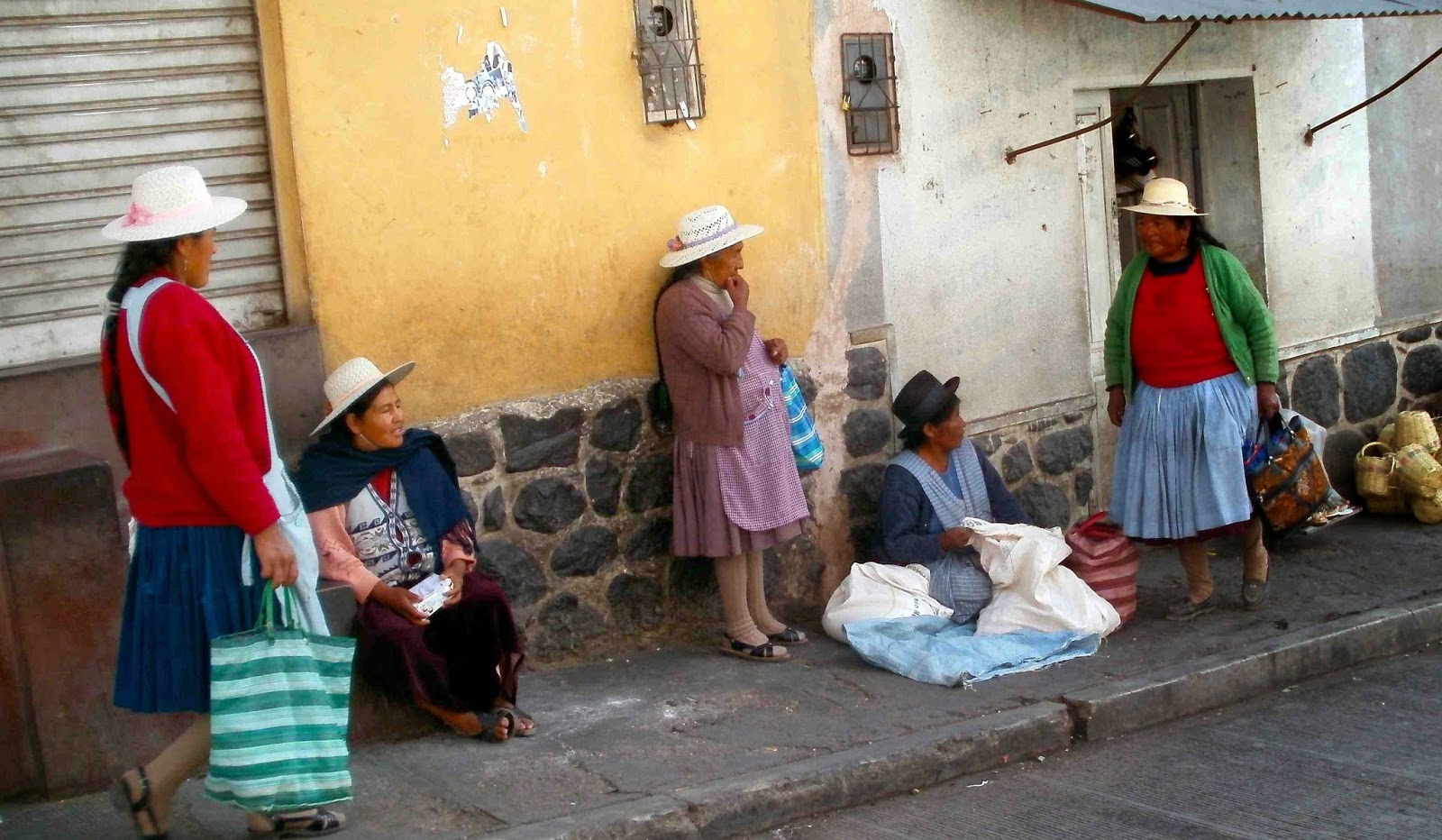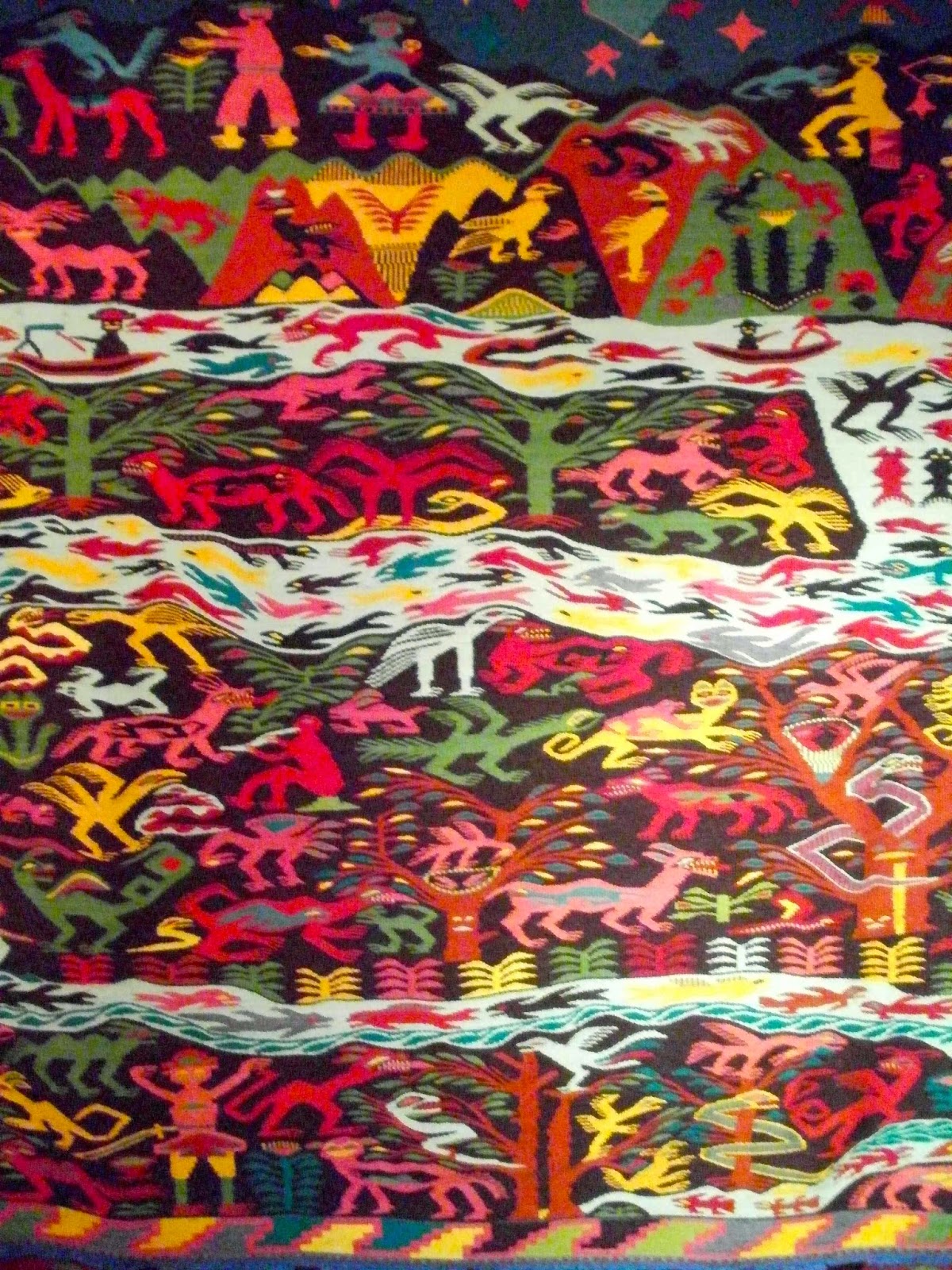Potosí, Bolivia
It ate me and spit me back out - skin too old, tough and salty. The silver mines of the “Cerro Rico” (rich mountain peak) of Potosí contained the largest and riches deposits ever discovered in the history of humanity. It was well-known by indigenous natives before the Spanish conquest of Bolivia. The Incas discovered it in the 1400’s. The conquistador’s unquenchable thirst and desire for silver created an era of exploitation and development that sent silver all the way to India and helped finance construction of the Taj Mahal. India’s royalty traded spices and silk with European countries for Potosí silver.
The Cerro Rico towers over the city of Potosí
Sixteenth century depiction of Cerro Rico & the growing city of Potosí
Elaborate items made from Potosí silver for those who made fortunes
Sixteenth century Potosí silver coins; they were once
round, but unscrupulous merchants shaved bits & pieces
of silver & resold the ore for a profit
Elaborate items made from Potosí silver for those who made fortunes
Sixteenth century Potosí silver coins; they were once
round, but unscrupulous merchants shaved bits & pieces
of silver & resold the ore for a profit
In the 16th to 17th century, Potosí was the largest populated city in the world -- over 250,000 people. It was bigger than the biggest cities of the era, more inhabitants than London, Paris, Madrid, Beijing, and Mexico City. Even though it’s around 14,500 feet above sea level, with thin air to support life, where no agriculture can grow, it lured men and women from all over the world in hope of striking a fortune. It’s estimated that over 8 million (that’s eight million!) miners and workers sacrificed their lives over the course of 500 years in the struggle to pull silver from the bowels of the mountain.
Very little grows in the high plain between the eastern &
western ranges of the Andes where Potosí is located
An indigenous village located on the way to Potosí;
the place is desolate, wind blown, and a harsh environment to live in
Today, it continues to be worked, with life expectancy of a typical indigenous miner being a little under 40 years old. The city of Potosí, located at the base of the mountain, suffers polluted water and contaminated air from mining operations. People continue to die at an alarming rate at an early age. The “Cerro’s” appetite for human lives will never be satiated.
There are many indigenous widows in Potosí; their
husbands die in their 30's leaving them with few options for survival
There are fading hints that Potosí was once
one of the riches cities in the world
At night after 30 minutes of sleep I wake in despair and cry out: “I can’t breathe. I’m having a heart attack! It feels like 2 three hundred pound sumo wrestlers are sitting on my chest.” Without sufficient oxygen I can’t think, write, eat or even go to the bathroom. My head is pounding like I’m slamming it against a wall. I’m in bed lying lifeless, disoriented, lethargic, and lacking appetite for food or for living. I’m hyperventilating and can’t catch my normal breathing pattern. I need oxygen. I’m suffering from high altitude sickness. But, there is a cure! Relocate to a lower altitude and quickly before I suffer permanent brain damage.
The mighty Andes surround Potosí
No matter where you are in the city, the Cerro Rico
How could African slaves, indigenous people from low lands, and European indentured servants sustain employment without enough air to breathe? They didn’t! Many lasted between 6 to 9 months, collapsing to a painful death due to mine accidents, mercury poising (used to extract silver ore from rock), lack of oxygen, or just being exhausted from hard, laborious work, with little food and no rest. Without adequate oxygen a person cannot sleep or rest at night unless they’re acclimated.
Indigenous laborer & African slave work to extract silver from ore
using mercury; this chamber would be filled with mercury fumes,
workers succumbed to an agonizing death after working 6 months
This image was made by a native artist & hangs in the main courtyard
of the Potosí mint; it's features are indigenous and its smirk seems to
be telling the Spanish overlords that it will outlast their dominance
I toured and explored the historical city of Potosí as much as my weakened body allowed, but had to leave earlier than planned. During my travels throughout the Americas, my experience in Potosí was the most distress, fear and risk to my well being that I encountered. I needed to leave in pursuit of the most basic things in life, things we all take for granted -- breathing, sleeping, eating, and having a bowel movement. I would give a year’s salary, no make that ten years, for just the opportunity to experience a full, unlabored breath of fresh, nurturing oxygen. I’m headed for the low lands and don’t care if the air is polluted, as long as I can breathe.
Manny de rides the bus down to 9,000 feet in pursuit of more oxygen;
his travel companion is an "Inca" miner suffering lung problems,
he coughed most of the way until he fell asleep
Trees! That's a good sign, we're down to the tree line & I can feel
the added oxygen coursing through my lungs
(Public Health Disclaimer: do not attempt unless you’re in great health and it’s approved by your doctor. You can experience what I did, hold your breath for 45 seconds, then get up and walk rapidly until you count off another 45 seconds. Yes, it’s frightening.)
____________________
The following are a selection of fine textiles from the native people who live in the Andean villages around Potosí. Textiles were very important to Andean cultures. Beyond just a show of wealth and skill, they were made as offerings to the gods and goddesses. The motifs ranged from depictions of everyday scenes, animals, and practices to abstract concepts of cosmology, the supernatural, and an attempt to communicate and explain dreams.
I'm headed back to Santa Cruz de la Sierra in Bolivia. I'll stay one day and night to rest and on to Argentina . . . . .























No comments:
Post a Comment